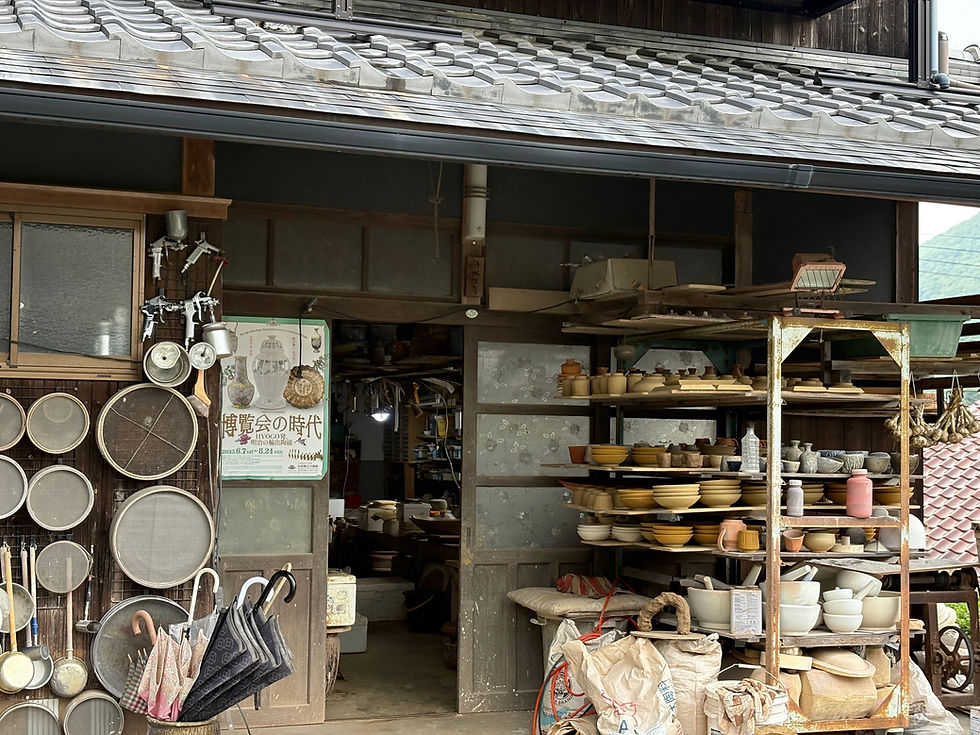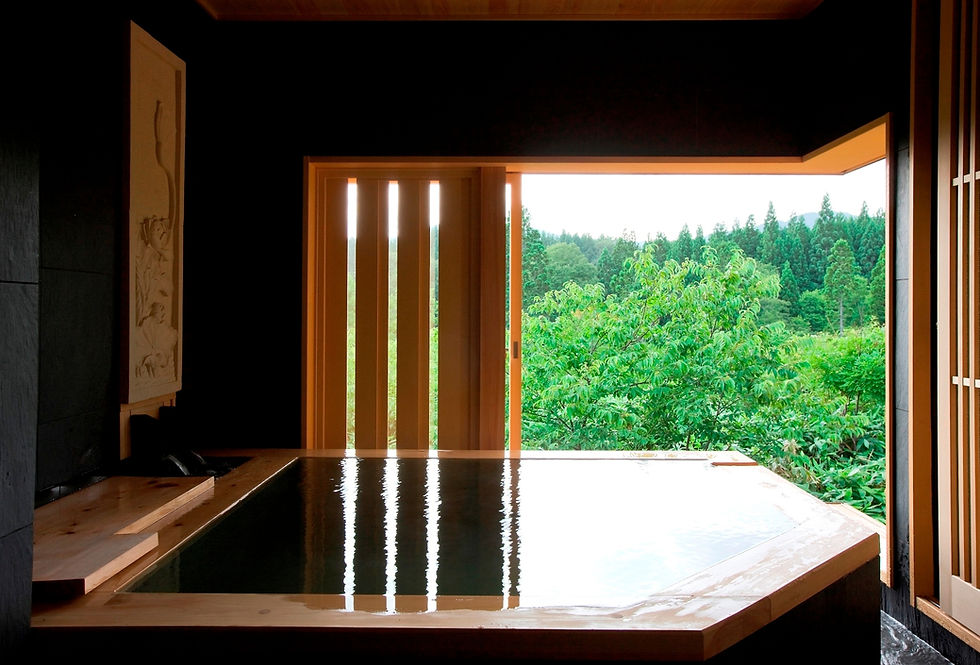A Path to Intentional Living: Japan’s Design Philosophy
- janellesison
- Sep 1
- 4 min read
Design is a quiet cohesive composition of visual elements, often left unnoticed. But among Japan’s world of aesthetics is a philosophy where design becomes a way of being. Whether in the spaciousness of a traditional house, black ink writing, or in repurposed items, Japan holds hidden meaning behind its minimalistic aesthetics.
It’s a philosophy centered around intention. It’s the quiet power of Japanese design.

Woven into daily life, three principles intricately shape how Japanese minimalism is interpreted: Shizen-sa (自然さ), Ma (間), and Wabi-sabi (侘び寂び).
These aren’t abstract ideas, they live within culture and communities, spaces and souls. They present themselves quietly in every built room, every textile, and every lifestyle custom. For travelers, Japanese design isn’t confined to galleries or blueprints. There’s more than admiration and structure, Japan’s minimalism is an opportunity to slow down and step into a new way of being.
Shizen-sa (自然さ), naturalness, is the idea of deep connection with the physical world.
In Tamba-Sasayama, Hyogo, Mameya brings Shizen-sa to life. Mameya is a lodging facility renovated from a nationally registered tangible cultural property. Inspired by sukiya-zukuri, this structural design has an organic essence within its materials where decorations are chosen to reflect the changing seasons, and its walls are constructed to echo Japan’s historical past.
At its center lies a rock garden. At first glance it may seem like a pile of rocks and sand, but looking deeper– its placement is ambiguous, meant to be experienced differently. Here, each guest has a different view of the garden depending on their room location. The design reminds guests that nature shifts, shaping the way we view natural beauty.
This is how shizen-sa is used. You begin to find meaning in the absence of artificiality. It’s a richer, more quiet rhythm in design, not for display, but for embracing a deeper presence between you and nature.

Complementing shizen-sa is ma (間), a thread in Japan’s design philosophy embracing unique perspectives of spatial awareness where less is more. Rather than filling in every inch of the room, ma integrates emptiness as a design element creating room for impactful perceptions. This principle extends beyond the arrangement of living spaces into the realm of artistry.
In calligraphy, spaces hold as much meaning as the writing itself. Its emptiness is not there to be filled but to be simply noticed. In Western Philosophy, “filling in the blank” is known to have a positive connotation. In Eastern thought, emptiness is a natural compliment to what’s existing.
Within the absence of excess, our eyes are drawn to each black brushstroke, allowing our mind to focus on what’s being presented. In Ube, Yamaguchi, activities related to calligraphy including inkstone-making are open for travelers to participate in. This creates an experience where observation transcends into immersive participation, allowing Ma to be experienced as a living philosophy and ready to be deeply understood.

There’s a quiet elegance within this spatial asymmetry and object impermanence.
Wabi-sabi molds how beauty and value are perceived in Japanese design. Though often associated with weathered gardens or teahouses, wabi-sabi flows seamlessly into architecture and craftsmanship, where each imperfection is cherished, and every material is honored with intention.
It’s wabi-sabi that redefines sustainability into a model of circular design. In the small Shikoku town, Kamikatsu is known for its zero-waste initiatives, where locals repurpose discarded materials into functional pieces. In one of Kamikatsu’s spaces is Rise & Win Brewing, guests can sip craft beverages under an upcycled building of reclaimed windows, old kitchenware, and rerepurposed wood.
Every inch of the building embodies wabi-sabi sustainable living in its most creative form. Travelers may even delve into the town's circular design facilities or stay at eco-inns through curated experiences where wabi-sabi is felt in a new way.
The aesthetic of repurposing into something goes beyond design itself. To enjoy the slow travel, is to perceive the wabi-sabi mindset. It’s about embracing a philosophical guide to a more simplistic, fulfilling way of living.

The same sensibility lives in Japan’s traditional practice of Kintsugi. Rather than discarding broken ceramics, artisans thoughtfully seal its imperfections with urushi lacquer and a metal powder. This act is a quiet affirmation of purpose and presence, honoring the object’s impermanence.
Kintsugi reflects Japan’s minimalist ethos blends with wabi-sabi, placing value on functionality, depth, and beauty of imperfection. It’s about letting textures and color nuances shine through, avoiding over-processed elements that mask the inherent beauty of what used to be.
Just three hours from Tokyo, Daigo, Ibaraki, provides deeper immersion into these principles, beyond the silent design observation. Travelers can meet lacquerware artisans, observe the harvesting process, and even take part in Kinisugi. Here, wabi-sabi is no longer an abstract way of living, it’s an opportunity for you to become part of the art itself.

These principles do not exist in isolation, they extend through every layer of Japanese aesthetics. Together, shizen-sa, ma, and wabi-sabi fill Japan’s way of living through design. These concepts are deeply engraved in Japanese culture, making it possible to identify their traces, though embedded silently in the spaces we stay, the objects we use, and the destinations we visit.
This is the quiet power of Japanese design, not loud in presence, but seen and felt within ourselves. It’s an intentional blend of visual serenity and mindfulness.
At the heart, slow traveling values true experiences, prioritizing meaningful connections over quantitative visitations. Experience these design values permeating houses and art, landscapes and tradition by directly engaging in arts, sustainable communities, and areas shaped by nature, inhabiting its intentional essence.
For travelers seeking depth, whether philosophically, aesthetically, or experimentally, Japan offers more than its beautiful spaces. You’ll go home with more than souvenirs, you’ll be left with a deeper way of seeing, being, and belonging in the world.



Comments